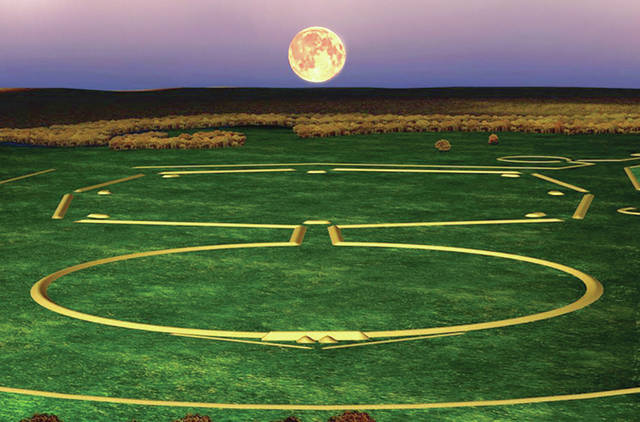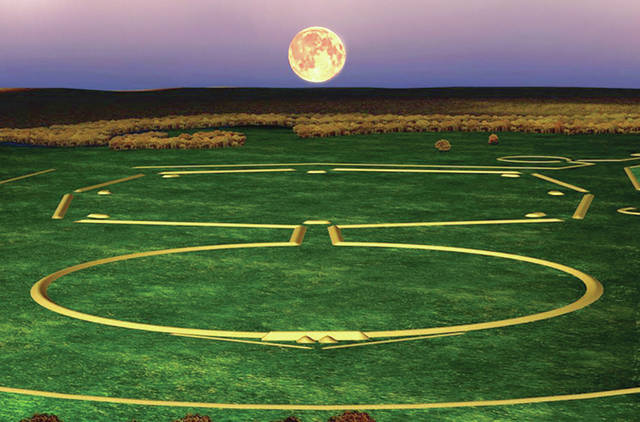

GREENVILLE — Patrons of the Greenville Public Library were treated to a presentation on the history of Native American habitation in the Miami Valley Tuesday night.
Kathy Creighton, executive director of the Butler County Historical Society in Hamilton, delivered the presentation. She and her husband, Ed Creighton, previously delivered a lecture on the history of chocolate to library patrons in November of last year.
“You guys live Native American history every day, living here in Greenville,” Creighton said near the beginning of her talk.
Later Creighton briefly touched on events surrounding the Treaty of Greenville and Chief Little Turtle.
According to Creighton, the first Native Americans to inhabit Ohio came around the year 10,000 B.C., near the end of the last Ice Age. The most well-known of these “paleoindians” are the Clovis culture, a civilization of hunter-gatherers who lived together in small groups, were constantly moving from one settlement to another, and used flint to make primitive tools, including spearheads used for hunting.
“We don’t know what these people called themselves,” Creighton said. “That’s the distinction when we talk about a ‘culture’ as opposed to a ‘tribe,’ like the Shawnee. The Clovis people left no written language behind, and of course, the white man wasn’t here to write down what they were called.”
The Clovis, like most other ancient American Indian cultures, were named for the area near Clovis, New Mexico, where signs of their civilization were first discovered.
After the Clovis came the Archaic Indians, Creighton said, who lived in distinctive dome-shaped houses called wigwams, which were made by stretching animal skins over a framework of wooden poles. The Archaic people developed the first trade-based economy in North America, began making specialized tools, and were also the first to begin planting seasonal crops, moving from one settlement area to another as the crops they were currently raising went out of season.
The Mound Builders, including the Adena and later Hopewell cultures, started to emerge around the year 1,000 B.C. Spread across portions of what is now Ohio, Indiana, Kentucky and West Virginia, signs of these civilizations were first discovered near Chillicothe. The Adena adopted much more advanced farming practices, which allowed them to establish settlements lasting several years, and are the first Native American culture known to begin producing works of art, including sculpture and pottery.
“When I talk to younger kids about this, I usually talk about ‘needs and wants,’” Creighton said. “Earlier cultures needed to move around and look for food all the time. They didn’t have time to make art. The Adena are the first to have time to sit around and think about wanting pretty things.”
These cultures are primarily known for their Earthworks, including mounds, large dome-shaped structures usually found near rivers and streams. Although sometimes used as burial sites for prominent people, they were primarily used as watchtowers, as well as to mark territory belonging to a particular society. The Hopewell culture also is known for its extensive trade networks, which stretched from as far west as what’s now Yellowstone National Park, to the east coast, as well as from Canada in the north to Florida in the south.
As the Iroquois came down out of New York during the 16oos, many of the tribes inhabiting the Ohio area at that time were pushed out, with the Shawnee moving as far south as Georgia and the Miami being pushed into Indiana. Signs of these cultures, and those that preceded them, can still be found throughout Ohio, however, from the extensive Earthworks near Newark to the remains of Fort Ancient in Oregonia. Ed and Kathy Creighton still routinely find artifacts strewn across the farmland administered by the Butler County Historical Society.
Those wishing to contact the Butler County Historical Society to arrange a visit or schedule a presentation may call 513-896-9930.


